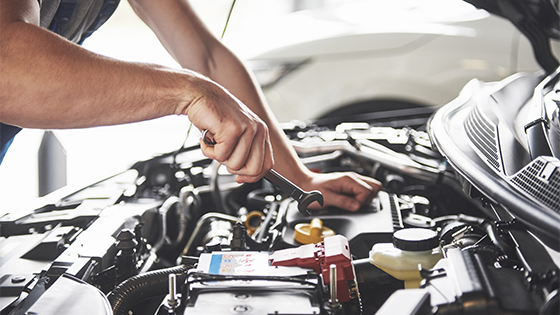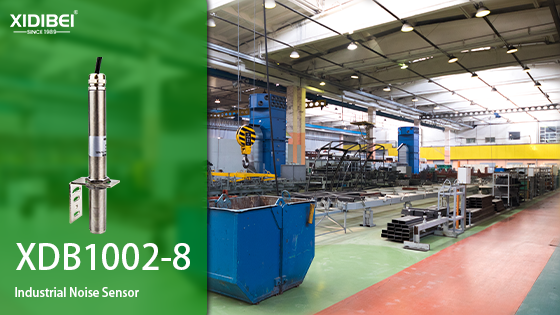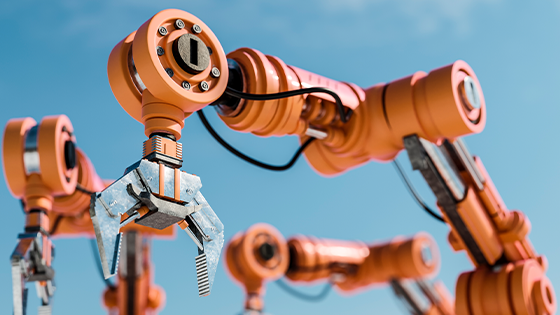
What Are Sensors?
If your life were a movie, sensors would be the unsung heroes working silently behind the scenes, ensuring everything runs smoothly. They can detect temperature, sound, pressure, and even changes in light, quietly helping your phone, car, microwave, and even your smart lock function efficiently every single day.
Take a simple example: when you approach an automatic door, it opens with a swish. It’s not magic; it’s the work of a light sensor detecting your presence. These small devices, often overlooked, hold up much of the modern technological world.
So, how do sensors “sense” the world around them? How many types of sensors are there? Today, we’ll take five minutes to help you quickly go from a novice to a sensor expert.

The "Social Circle" of Sensors
The world of sensors is like a group of talented friends, each specializing in a unique area. For example, pressure sensors are like attentive guardians. Whether it’s monitoring tire pressure, ensuring the safety of industrial pipelines, or controlling boiler systems, they can precisely detect even the slightest pressure changes. Meanwhile, temperature sensors are like weather forecasters, providing accurate readings to keep air conditioners, refrigerators, and even engines functioning optimally.
Then there are light sensors, the curious detectives always watching changes in light. They ensure your phone adjusts its screen brightness to match the environment. As for noise sensors, they are like the quiet neighbor who’s always sensitive to environmental sounds, helping monitor noise levels and create quieter surroundings.
These sensors, though seemingly ordinary, work together as a team. They use their unique abilities to make our lives smarter and more efficient.
How Sensors Work (Simple and Easy-to-Understand)
How exactly do these sensors work? Don’t worry, you don’t need to be a physicist to grasp the basics. Here are a few simple analogies to explain their core principles.
Take pressure sensors, for example. Their working principle is akin to a spring. When you press down on a spring, it deforms according to the force applied. In a pressure sensor, this "spring" is a highly sensitive material that translates mechanical changes into electrical signals. For instance, in a car’s braking system, the pressure sensor detects changes in hydraulic pressure to ensure safe and reliable braking.
Temperature sensors, on the other hand, are like chameleons. Their properties, such as resistance or voltage, change with temperature, which is then converted into temperature data. In air conditioners, for example, they continuously monitor indoor temperatures to adjust cooling or heating output.
Light sensors are like mirrors that can "feel." When light hits them, their output signal varies according to the intensity of the light. That’s why your phone can automatically adjust its brightness to protect your eyes.
Finally, noise sensors work much like a highly sensitive microphone. They capture sound waves in the air, converting the intensity of the sound into electrical signals. This is why they’re indispensable in industrial workshops for monitoring noise levels and ensuring a safe environment for employees.
From springs to chameleons, mirrors, and microphones, sensors use various physical principles to translate external signals into data that machines can understand, helping us accomplish countless tasks seamlessly.
Real-World Applications of Sensors
The magic of sensors lies not only in their working principles but also in their ubiquitous applications. From homes to factories, cars to hospitals, they quietly transform our lives.
Let’s start with the most familiar scenario: air conditioning. Temperature sensors act as the brain of an air conditioner, accurately detecting subtle changes in room temperature and instructing the system to adjust the output. Whether it’s a scorching summer or a freezing winter, they work behind the scenes to ensure your comfort. In the kitchen, pressure sensors are just as valuable—they measure the pressure inside your rice cooker to make sure your rice is cooked to perfection.
In industrial settings, pressure sensors are indispensable “safety sentinels.” For example, they monitor the pressure inside oil pipelines, quickly identifying anomalies to prevent leaks or explosions. Noise sensors are equally vital in factories, helping companies monitor environmental noise levels and create healthier working conditions for employees.
In our everyday cars, sensors form a vast “neural network.” Pressure sensors detect hydraulic pressure in the braking system, light sensors control automatic headlights, and temperature sensors monitor engine temperatures to prevent overheating.
These examples are just the tip of the iceberg. Sensors may work silently in the background, but their precise sensing and feedback make our world safer, more efficient, and more comfortable.
How to Choose the Right Sensor
With so many sensors to choose from, how do you pick the one that’s right for your needs? Don’t worry—it’s easier than you think. Choosing a sensor is much like picking a smartphone: the key is knowing what you need and focusing on a few critical parameters.
- Understand the Application First, clarify where and why you need the sensor. For example, if you’re monitoring hydraulic systems, a pressure sensor is your best bet. If it’s for indoor temperature control, a high-precision temperature sensor is the way to go. And if the environment is noisy, noise sensors with strong anti-interference capabilities are essential.
- Pay Attention to Measurement Range and Accuracy The sensor’s measurement range determines the “maximum and minimum” values it can detect, while accuracy dictates its ability to capture subtle changes. In industrial applications, for instance, pressure sensors often need an accuracy of ±0.5% or higher to ensure safety.
- Consider Response Time and Real-Time Capability For scenarios requiring quick reactions, response time is crucial. In a car’s braking system, for example, pressure sensors need millisecond-level response speeds to ensure safety.
- Evaluate Environmental Adaptability If the sensor must operate in extreme conditions (e.g., high temperature, high humidity, or strong vibrations), its material and design must be robust. Many of XIDIBEI’s sensors feature stainless steel housings for durability and reliable performance in harsh environments.
- Check Interface Compatibility In modern smart systems, communication capabilities are increasingly important. Sensors with Modbus protocol support and 485 interfaces can transmit data over long distances and integrate seamlessly with most automation systems.
Choosing the right sensor isn’t difficult. By understanding your application needs and key parameters, you’ll find the perfect match. Manufacturers like XIDIBEI not only offer a wide range of standard products but also provide customized solutions to tackle complex challenges.
Future Trends in Sensors
As technology continues to advance, sensors are stepping out of the shadows to become key drivers of the smart age. From Industry 4.0 to smart cities, from autonomous vehicles to the Internet of Things (IoT), the future of sensor technology is full of promise.
- Higher Precision and Sensitivity Future sensors will be more precise and sensitive. In the medical field, for example, sensors are already used to detect blood pressure, heart rate, and even blood sugar levels. The next step could be micro-sized sensors implanted in the body, monitoring health in real-time and enabling personalized medicine.
- Improved Environmental Adaptability Sensors will face increasingly complex environmental challenges, such as extreme cold, heat, humidity, or corrosion. With new materials and innovative designs, future sensors will become more adaptable, ensuring stable performance in any environment.
- Integration with IoT Traditional sensors usually output signals in one direction, but future smart sensors will analyze data autonomously and transmit real-time information via IoT platforms. For example, in smart homes, a smart temperature sensor can not only measure temperature but also adjust air conditioning or heating systems based on user habits.
- Miniaturization and Low Power Consumption Miniaturization is another major trend. Smaller sensors can be easily embedded in various devices while consuming less power. In next-generation wearable devices, sensors will provide longer battery life without compromising precision.
- Multi-Function Integration Future sensors will integrate multiple functions. A single sensor might measure pressure, temperature, and humidity simultaneously, offering more comprehensive data for industrial systems.
As these trends evolve, sensors will no longer be just the “sense organs” of devices but also the “brains” of smart systems. XIDIBEI is committed to advancing these cutting-edge technologies, from material innovation to intelligent solutions, to deliver more efficient and reliable sensor products.

Sensors Driving the Future: Technology Shaping Life
From detecting subtle pressure changes to sensing environmental nuances, sensors have become the silent heroes of modern technology. They optimize systems and collect data to bring us smarter, more efficient solutions.
The future of sensors is undeniably bright. Whether ensuring safety and efficiency in industrial production, optimizing resource allocation in smart cities, or saving lives in healthcare, sensors play an increasingly vital role. As technology advances, sensors will continue to evolve, becoming smaller, more powerful, and smarter.
In this era of transformation, companies like XIDIBEI leverage extensive experience and innovative technology to drive sensor development. From HVAC systems to industrial automation, from smart homes to healthcare, XIDIBEI provides exceptional solutions for customers worldwide.
In the future, sensors will no longer be behind-the-scenes heroes but indispensable core technologies of the smart age. And your every smart experience may just come from one small yet powerful sensor.
About XIDIBEI
XIDIBEI is a professional pressure sensor manufacturer dedicated to providing high-quality and reliable sensor products to customers worldwide. With extensive experience in the automotive, industrial, and energy sectors, we continuously innovate to help various industries achieve smarter and more digital futures. XIDIBEI’s products are sold globally and have earned widespread acclaim from customers. We uphold the philosophy of "technology first, service excellence" and are committed to providing superior service to our global clients.
For more information, visit our website: http://www.xdbsensor.com or contact us via email at info@xdbsensor.com.
Post time: Jan-16-2025

